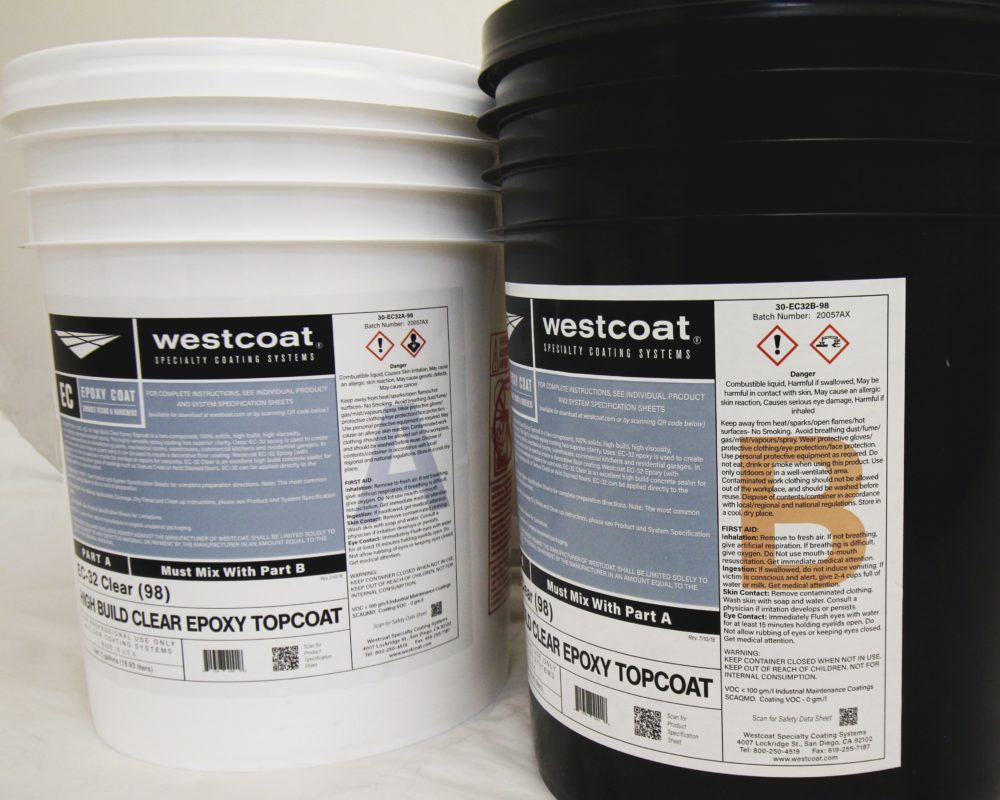
Differentiating Between Part A and Part B
by Michelle
- July 1st, 2020 /
- Education,Epoxy,Product Updates
New pails for Part A, Part B epoxies
To create additional clarity for our customers, we have new packaging for our Part A and Part B products. This includes the products listed below in 10 gallon, 15 gallon and 20 gallon kits.
The part A will be in a white pail with a white lid. The part B will be in a black pail with a black lid. As always, read individual product specs for more details on proper mixing.
New Part A and Part B pails affect the following products:
EC-11 Water-Based Epoxy
EC-12 Epoxy Primer
EC-15 Moisture Vapor Barrier (MVB)
EC-34 Epoxy Topcoat
EC-38 Liquid Dazzle Epoxy
EC-40 Antimicrobial Epoxy
EC-44 Flex Epoxy
EC-50 Novolac
EC-84 Pebble Binder
EC-95 Polyurethane Topcoat
EC-101 Polyaspartic 100% Solids
EC-102 Polyaspartic



The importance of mixing correctly:
There are many important factors that contribute to a successful flooring installation, such as: selecting the correct system for the project, proper surface preparation and choosing quality materials and skilled applicators. Another key element, that may often be overlooked, is mixing.
Below is a list of points regarding the importance of mixing:
•Refer to all product and system specifications, SDS, training videos and other related resources, prior to mixing any products.
•Establish a clean and masked off mixing station that is suitable for the location of the project and type of products being mixed.
•Examine all products and packaging to ensure that the correct material is present, as well as the appropriate hardener or activator for 2k products.
•Be sure that the correct mixing tools are being utilized. For example, low rpm drills or mixers, correct mixing paddles and measuring containers.
•If thinning the product, be sure the correct thinner/reducer is selected prior to mixing.
•For pigmented materials, it is recommended to box all components containing the pigment, before combining with the activator/hardener.
•Refer to product and system specifications for recommended temperature ranges for installation, mixing ratios, mixing times, pot life and working times.
Below are some of the issues that occur if materials are not mixed correctly:
•Poor adhesion
•Pinholes / bubbling
•Fisheyes
•Material not drying or slow drying
•Color differential or color variations
Additionally, improper mixing can also negatively affect the overall physical attributes of a material, such as chemical resistance, hardness, etc.
These products are the main components in the following systems:
- Dubro and Dubro Quartz
- Epoxy Mortar and Mortar Quartz
- Epoxy Pebble
- Epoxy Slurry
- Flex Epoxy
- Liquid Dazzle
- Liquid Granite
- Thin Film
You can find the color chart here.


